Wolves were reintroduced into Yellowstone National Park during the winter of 1995-96. When released from an acclimation pen in the spring of 1996, the original 5 wolves making up the Druid Peak wolf pack took up residence in the Lamar Valley, a wintering range for elk and bison. There they have thrived, growing to about 37 wolves in 2002.
The Druids clinched their fate as the darling of wolf watchers in the park when they established a den site near the only road in the park that stays open all year. Consequently they have become the most photographed and most studied wolf pack.
The alpha pair on the move at day break.
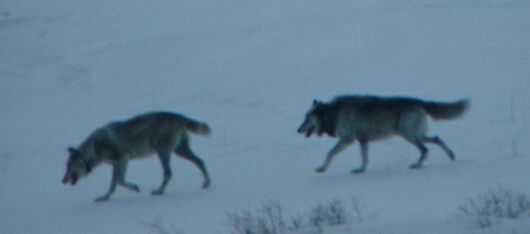
The photos on this page were mostly taken on in mid-March of 2003. I was able to get close-ups of the alpha pair, kill sites, and wolf watchers. During the spring of 2003, the pack split into several splinter groups, adding a new chapter to an interesting story.
If you are interested in learning more about the Druids, a number of resources are available.Druids bedded down for the day.
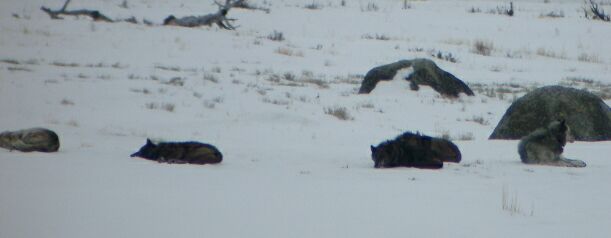
The alpha male, 21M, came from the Rose Creek pack -- replacing the original alpha male who was shot while venturing outside the park. He has distinctive white cheeks .
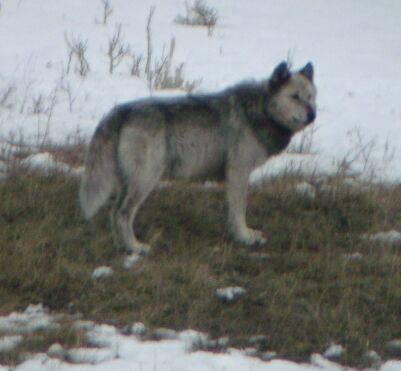
The alpha female, 42F, took over when her aggressive sister was finally ousted from the pack. Born a black wolf, she lightened with age and is now almost white. Her face is still bloody from feeding.
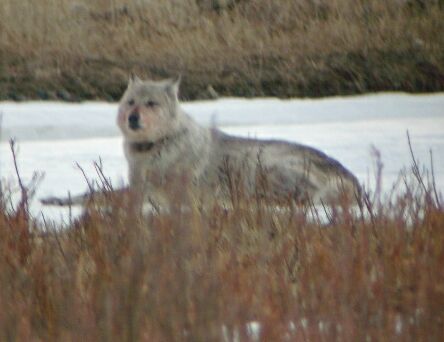
The alpha pair has seen the pack through rapid growth but at 7-8 years old they are aging. Observers are waiting to see what the future brings for the pair.
Alpha male and 2 young Druids bedded down for the day.

Other members can finish feeding after the alpha pair have had their fill. Here the ravens and magpies seem to know that the pack is about done with the kill for the morning and are moving into position. As soon as this wolf left, a coyote immediately moved in.

A Druid member moves off after feeding.
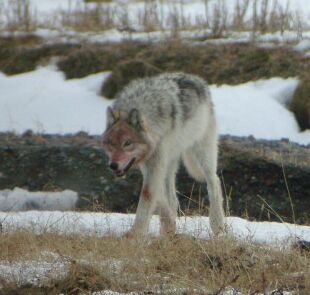
This kill was 2 days old but still had some meat left. The Druids came back to finish it off the next day after this shot.
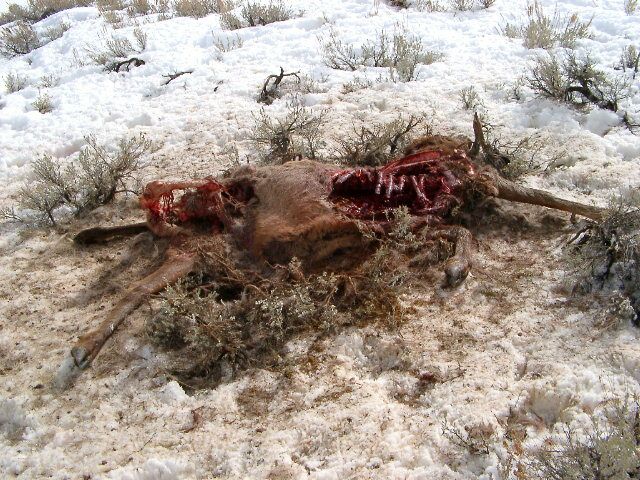
After the Druids reached 37 wolves, one of the largest recorded, the pack started to splinter into four groups during the spring of 2003. Apparantly such a large pack was difficult to maintain. While membership and territorial boundaries of the groups has been a bit fluid, some patterns have emerged. Two groups, the Geode Peak and Agate Creek, reached pack status because they denned separately and had their own pups.
The Geode Peak pack has about 8 wolves. Here they are heading up river in the morning light.
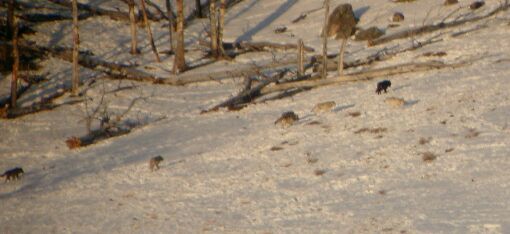
Note one wolf lying down to rest. With an injured front paw, he manages to keep up with the pack by bounding through the snow on three legs but the effort seems to take its toll.
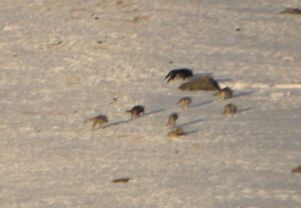
402M waiting for other group members to catch up after a chase by the Geode Creek pack.
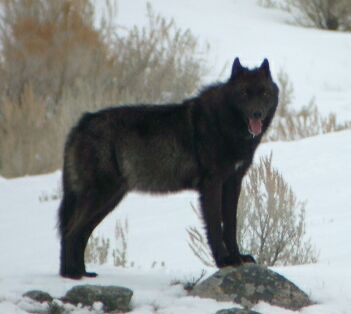
402M and U Black.
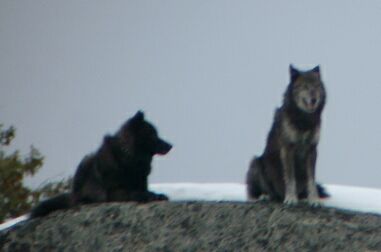
On any particular day, a cadre of researchers, photographers, and dedicated wolf watchers (plus tourists attracted by the crowd) can be found somewhere along the road to Cooke City. To minimize impact on the wolves, observers look for hilltops overlooking the action. A spotting scope and binoculars are indispensible tools.
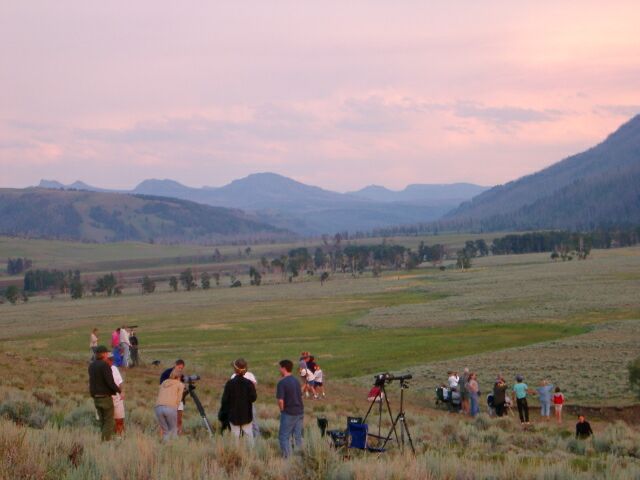
Ralph Maughan offers a very informative web site about wolf issues and news. He gives frequent reports on the status of the Druids and other park packs.
For incredible footage of the Druids, see the National Geographic special Wolves: A legend returns to Yellowstone by Bob Landis (available on videotape through the Yellowstone Institute's bookstore). Also look for a sequel that should air soon. This dedicated local photographer has chronicled the life of the pack from release to present day by being in the field virtually every day at first and last light.
James Halfpenny publishes identification cards descibing the Druids and other packs operating in the park (available from the Yellowstone Institute's park bookstore). Look for his soon-to-be-released book that describes what has been learned about the natural history of wolves from observations of the Druids.
The Yellowstone Institute offers a number of classes on all aspects of wolf natural history and wolf watching. They also operate the park bookstore. Check out their online catalog and bookstore.
Local photographer Dan Hartman has some interesting prints of the Druids for sale on his website and gallery Wildlife over the Rockies.
Return to Menu